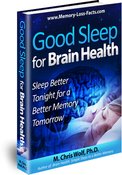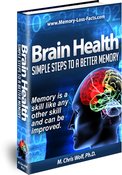Lewy Bodies Dementia
By M. Chris Wolf, PH.D.
Lewy bodies dementia (LB Dementia)is a common form of memory loss disease. This disorder is characterized by a progressive degeneration of the nervous system cause by the gradual accumulation of small bits of protein called Lewy bodies in the neurons in the brain responsible for memory and motor coordination. The cause of the build-up of the alpha-synuclein protein is not known, although a similar process is found in Parkinson's disease as well as Alzheimer's disease. Due to common symptomatology, differential diagnosis among the disorders is difficult, especially since the Parkinson's disease and Lewy Bodies dementia often occur concurrently. Since it is rare that there is a family pattern of this type of dementia, it is unlikely to have a genetic etiology.
Symptoms and Prognosis of LB Dementia
The signs of and Lewy Bodies dementia appear gradually. The symptoms include the following: a progressive degeneration of cognitive functioning; the appearance of being "spacey", unfocused, and inattentive; malaise and fatigue; disorganized speech as evidenced by "word salads; periodic visual hallucinations, often with the same content; and rigidity and loss of movement similar to that seen with patients diagnosed with Parkinson's Disease.
As with other degenerative diseases affecting the nervous system, Lewy Body dementia follows a progressive course. At this time, there is no cure or interventions known to slow the disease process. The average post-diagnosis survival rate of individuals diagnosed with this form of dementia is 8 eight years.
Treatment
While there is no known cure for this form of dementia, there are pharmacological interventions available to lessen the effects of the symptoms on the daily functioning of the individual. Psychiatric, cognitive, and motor manifestations of the disease are typically addressed with acetylcholinesterase inhibitors. Antipsychotic medications are contraindicated for the treatment of the hallucinations associated with Lewy Body dementia due to the potential exacerbation of muscle rigidity, which is a common side effect of neuroleptics and atypical antipsychotic medication. Early in the course of this disease, a consultation with an occupational therapist might provide some benefit to the patient through the identification of coping strategies to enhance the daily living skills of the person diagnosed with this disease.
Accessing Resources for Family Members and Loved Ones
The most valuable asset for a person diagnosed with this form of dementia is a family member who is knowledgeable about the course of this form of dementia and its treatment. This information empowers the family member to act as a strong advocate. The Lewy Body Dementia Association provides information about this disease on their website (www.lbda.org)
Reference:
National Institute of Neurological Disorders and Stroke. (2010, November 19). Dementia with Lewy Bodies Information Page. Retrieved July 30, 2011, from National Institute of Neurological Disorders and Stroke National Institute of Health: http://www.ninds.nih.gov/disorders/dementiawithlewybodies/dementiawithlewybodies.htm
Visit Dementia Overview
What is Vascular Dementia?
For more information about this topic consider these resources:
A Caregiver's Guide to Lewy Body Dementia by Helen Buell Whitworth and Jim Whitworth (Author)
Dementia with Lewy Bodies: And Parkinson's Disease Dementia by John O'Brien, David Ames, Ian McKeith, and Edmond Chiu (Editor)
Return from Lewy Bodies Dementia to Causes/Defined
OR
Memory Loss Facts









